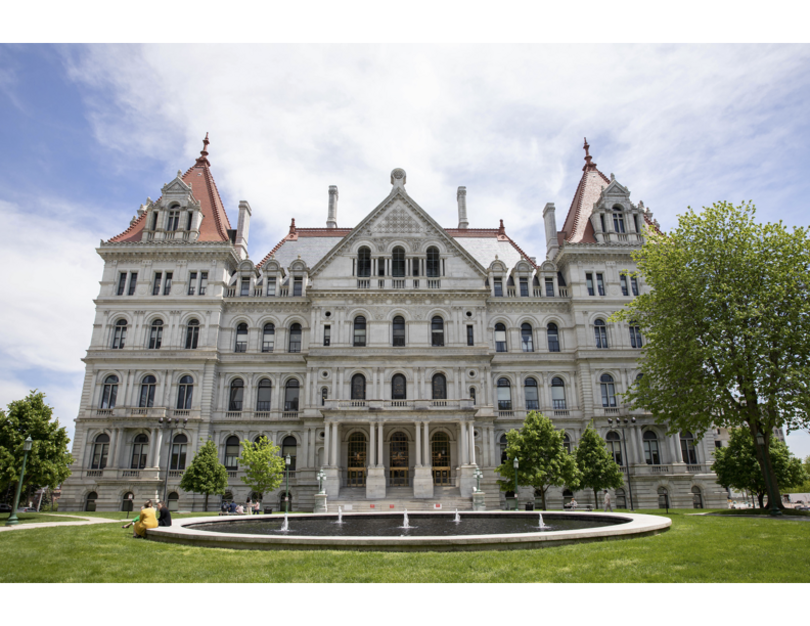One year since the overturning of Roe v. Wade, what has changed?

After the overturning of Roe v. Wade last year, New York state voted to enshrine abortion rights protections and is stockpiling Misoprostol. 10 other states expanded abortion protections after the ruling, while restrictions increased in most others. Daily Orange File Photo
Get the latest Syracuse news delivered right to your inbox.
Subscribe to our newsletter here.
Last May, the United States Supreme Court overturned a 1973 ruling that guaranteed the right to an abortion under the Constitution in the case Dobbs v. Jackson Women’s Health Organization. Since then, reproductive healthcare legislation has changed across the country, with some states moving to restrict abortion and others expanding access.
A draft of the decision was originally leaked via Politico on May 2, 2022, revealing the court’s plan to overturn Roe v. Wade. The source of the draft leak remains undetermined following an internal investigation over the past year by the investigative team of the court.
The Daily Orange compiled information about what’s changed in the year since the Dobbs v. Jackson case in New York state and across the country.
New York state
New York first legalized abortion in 1970, three years before the initial Roe ruling. Abortion is legal up to 24 weeks of pregnancy under current New York state law. After 24 weeks, abortion is legal if the pregnancy or life of the pregnant person is at risk.
Abortions in New York are available to out-of-state residents as well as in-state residents.
Gov. Kathy Hochul announced the New York State Department of Health would begin to stockpile doses of the abortion drug Misoprostol. The department is set to purchase 150,000 doses, which would supply an anticipated five years of demand, according to an April 11 news release.
Hochul’s 2024 fiscal year budget, which passed on May 2, includes $100.7 million in state funding to support abortion provisions. The funds will go to support abortion service providers and centers as well as Medicaid reimbursements, according to a May 3 news release.
State lawmakers passed an amendment in January which, if voters approve in 2024, would protect abortion rights and be added to the state constitution’s Equal Protection Clause.
Reproductive healthcare resources in Syracuse
The Barnes Center at The Arch at Syracuse University offers pregnancy testing and counseling, contraception management and counseling, testing and treatment for sexually transmitted infections and gender affirming care. Students can contact the Barnes Center at 315-443-8000 and access contraceptive resources online via the Safer Sex Express.
SU’s student insurance plan covers travel expenses for students seeking reproductive healthcare.
The Planned Parenthood of Central and Western New York is located at 1120 E. Genesee St., less than half a mile from SU’s campus. Planned Parenthood offers birth control and emergency contraception services, sexually transmitted infections testing and treatments, pregnancy testing and care, abortion and hormone therapy and sex education.
Planned Parenthood also offers language interpretation services. The center can be reached at 866-600-6886.
National
Following the Dobbs decision, the Supreme Court’s past precedents allowing same-sex marriage and access to contraception were called into question. The majority opinion ruled that abortion is not specifically named in the Constitution, meaning ruling in cases which legalize same-sex marriage and contraception access could be overturned on similar grounds, according to a concurrent opinion written by Justice Clarence Thomas.
Congress passed the Respect for Marriage Act to codify same-sex and interracial marriage, which Biden signed into law on Dec. 13, 2022.
In the year since the Dobbs decision, several states have taken action both in support of and against abortion access. In 2022 referendums, voters in Kansas and Kentucky rejected proposed state constitution amendments to ban abortions, and California and Vermont voters approved adding the right to abortion in the state’s constitution.
According to the Center for Reproductive Rights, New York and 10 other states have maintained or expanded access to abortion after the Dobbs decision. Abortion remains protected in 12 states and restricted or banned in 27.
In April, Judge Matthew Kacsmaryk of Texas ruled that the Food and Drug Administration’s approval of the abortion drug mifepristone overreached the agency’s authority and was politically motivated. Mifepristone is used alongside misoprostol in medication abortions, which are the most common form of abortions in the U.S.
The ruling didn’t go into effect for seven days, during which the FDA filed an emergency order to the Supreme Court. Justice Samuel Alito issued an administrative stay, allowing mifepristone to temporarily remain available, which the court then extended on April 21. Currently, mifepristone remains available across the country.
The mifepristone case will likely go back to the Supreme Court for a final decision on the drug’s legality in the court’s next term.





